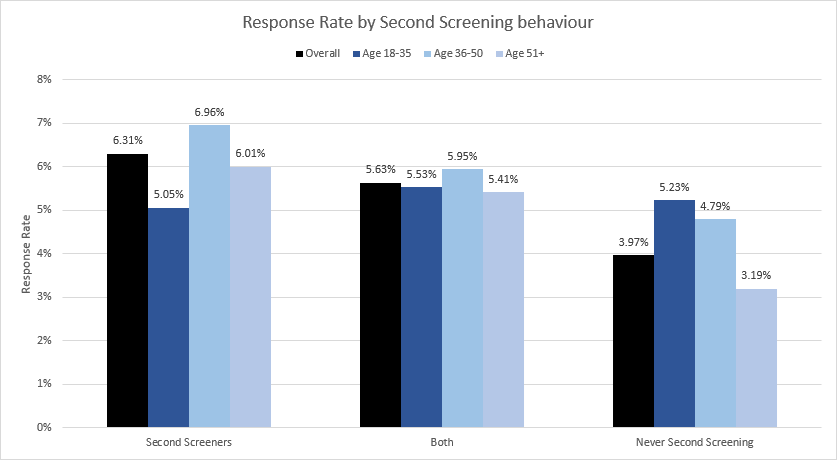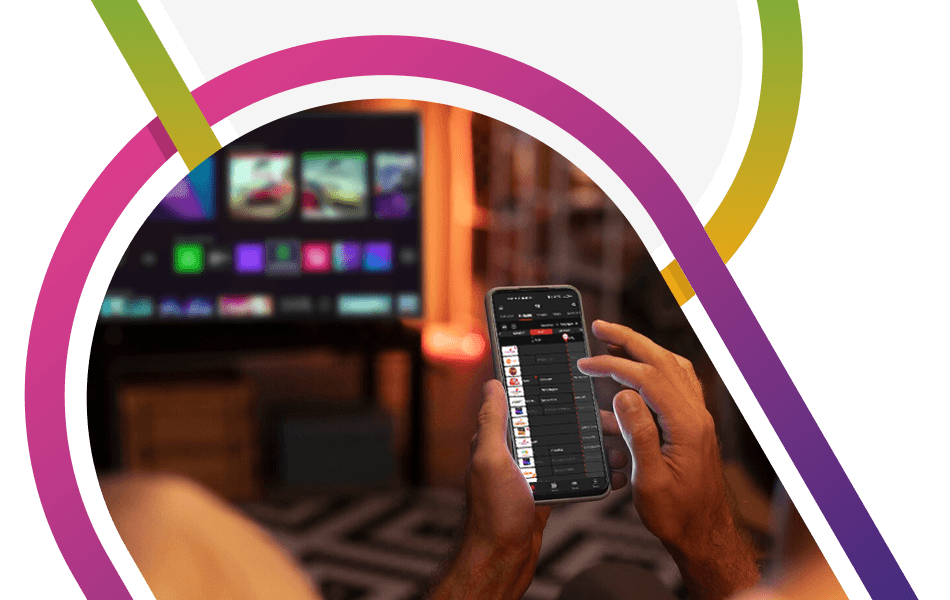
Free Digital Marketing Review
Elevate your online strategy with a personalised report and expert insights. Achieve your business goals faster!
What is Second Screening?
Simply, it’s using more than one device when consuming content. Second screening is now an integral part of media consumption, whether via TV or online. It’s not uncommon to see people watching TV while interacting with their smartphone and possibly using a laptop or tablet.
Why is second screening so crucial to marketing and brand managers?
As a marketer, any opportunity to get ahead of the competition and engage end users will get your business noticed.
Second screening is key to this success and if done correctly, can lead to the following:
Enhanced engagement: It enables marketers to create cross-channel experiences that engage users across multiple devices, amplifying the impact of their initial touchpoint.
Immediate action: Viewers can take immediate action on their second screen in response to TV ads, shortening the gap between watching an ad and taking action. Think The Voice voting app.
Additional data insights: The proliferation of second screening provides marketers with valuable data and insights about consumers’ digital habits, helping optimise campaigns and determine effective retargeting tactics.
Reinforced messaging: Advertisers can reinforce their TV ad messaging by serving ads on the second screen, creating a more cohesive and impactful campaign.
Increased conversion opportunities: Second screening turns mobile devices into potential points of sale, allowing for immediate purchases in response to TV ads.
Extended reach: It provides opportunities to create additional brand touchpoints and expand concepts beyond the TV screen.
Real-time interaction: Marketers can engage viewers with supplementary content, social media conversations, or companion apps related to the primary content they’re watching.
Audience relationship ownership: By leveraging second screening, broadcasters and marketers can establish more direct ownership of the audience relationship rather than relying solely on traditional TV advertising. In our recent blog post, we discussed how this can all go wrong if second screening is ignored.
New revenue streams: Second screening opens up possibilities for monetisation through companion apps and other digital channels. Think the Britain’s Got Talent App.
Deeper content engagement: It allows viewers to explore additional information about what they’re watching, potentially increasing their overall engagement with the content and associated brands.
Second Screening Case Studies
“Several successful case studies demonstrate the effectiveness of second-screen campaigns:
- Mercatino: This Italian online second-hand market achieved a 93% listen-through rate and retargeted 48% of unique users using Second Screen Retargeting. The campaign combined audio ads with display ads, effectively engaging the 18-34 audience demographic.
- Hyundai IONIQ 6 EV: Hyundai’s campaign utilised in-game audio advertising and Second Screen Retargeting. It achieved a 1.3% “in-game audio to test drive” conversion rate, a 6.3% companion banner click-through rate, and generated over 8,000 leads.
- Britain’s Got Talent: ITV’s app for the show offered interactive features, including quizzes and voting, during live broadcasts. Research has shown that app users demonstrate increased engagement and receptiveness to advertising.
- The Voice: The dedicated app for this talent show enabled viewers to vote for contestants, participate in real-time polls, and access behind-the-scenes content during live broadcasts, achieving remarkable success in boosting audience engagement.
- Co-operative Electrical: The company partnered with eBay to run an advertising campaign coinciding with the final of The Great British Bake Off, linking live TV to eBay ads.” Source: Google AI Overview
These case studies highlight the potential of second-screen campaigns to drive engagement, increase conversions, and enhance the overall viewing experience across various industries and event types.
Second screening challenges
The irony is that the second screening’s success is also its challenge.
Consumer Focus
Statistics suggest that with the average focus time of an adult declining second screening has its challenges. Does using the phone drag customers away from the TV and vice versa?
Dumbing Down Content
Rumours from Hollywood suggest that TV is being dumbed down to cater to second-screeners. The real question is, does this dumbed-down content put people off entirely or make them even more likely to be distracted?
Alternative Channels
Netflix launched its gaming content in 2021 and has since heavily promoted the service. Eyeballs are eyeballs, after all. One could suggest that the focus needed for gaming success is not conducive to advertising.
Less Ad Revenue
Ads generate a significant portion of revenue for many broadcasters, including those that charge for content. As viewership is a key metric in determining whether to spend, how do broadcasters build a model that reflects second-screening behaviour?
The Marketing Challenge
How do you encourage users to engage with TV ads while also engaging across multiple platforms?
What’s next for second screening?
In a recent study by Viewerlogic, a panel of users with varying attitudes toward second screening was shown TV ads. The response rate was calculated based on the number of website users within 7 days.

Overall, it can be said that second screener response rates were the highest. However, what is clear is the 18-35 age group was less likely to respond.
The takeaway
Second screening is just one facet of consumer behaviour. Based on our experience, social advertising is crucial for targeting 18-35 year old consumers; TV still has its place. It’s just a little more expensive.

Need help with your website and marketing?
Book a FREE growth strategy session with our experts
Our award-winning team will review your website and marketing goals to provide you with crucial insight and advice.

4.9 STAR
Google reviews
With 10+ years of experience, Link Digital has helped hundreds of businesses to succeed online. We can help yours too!

